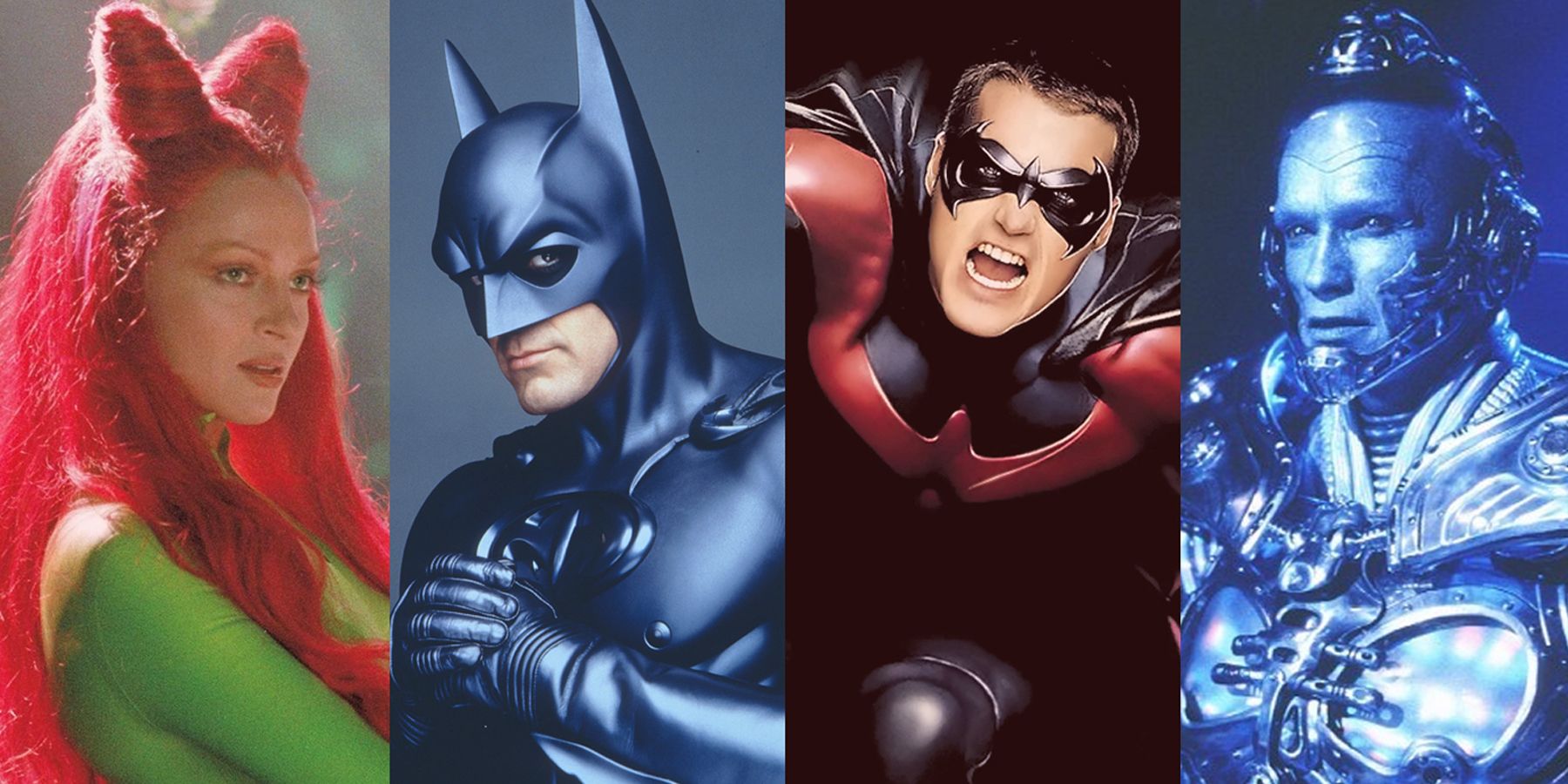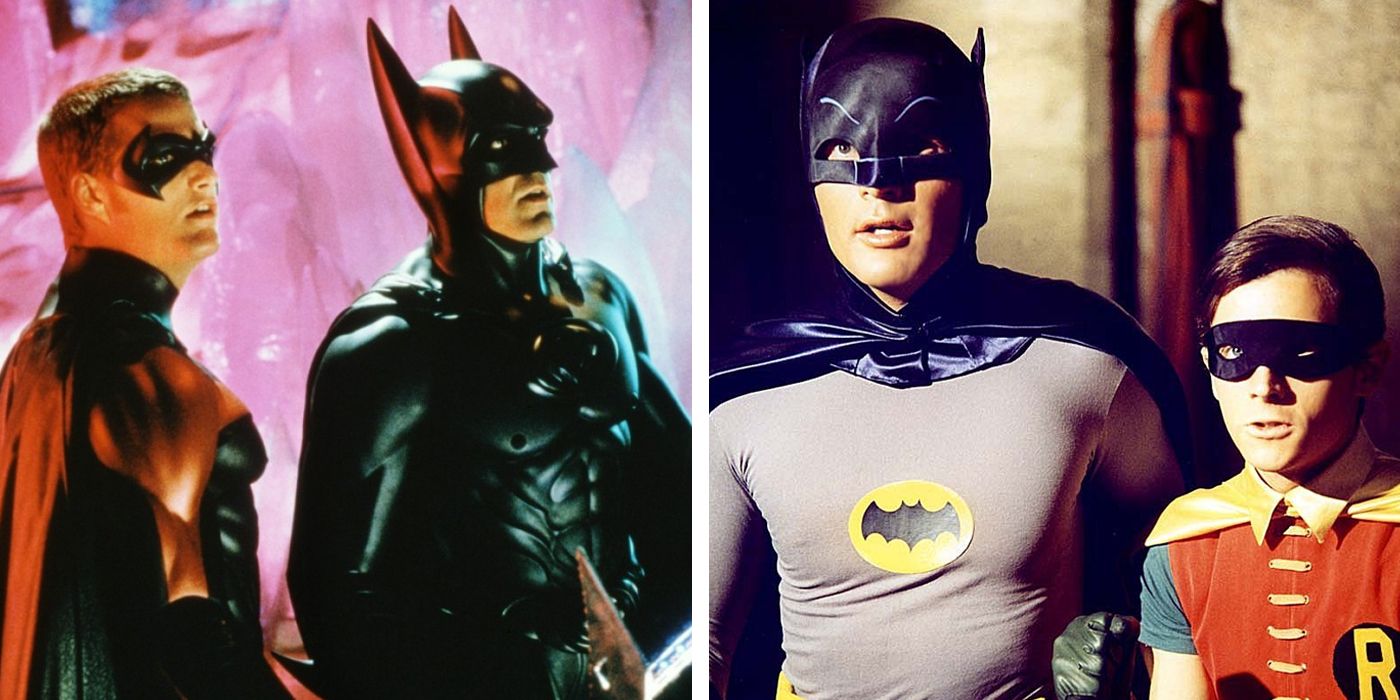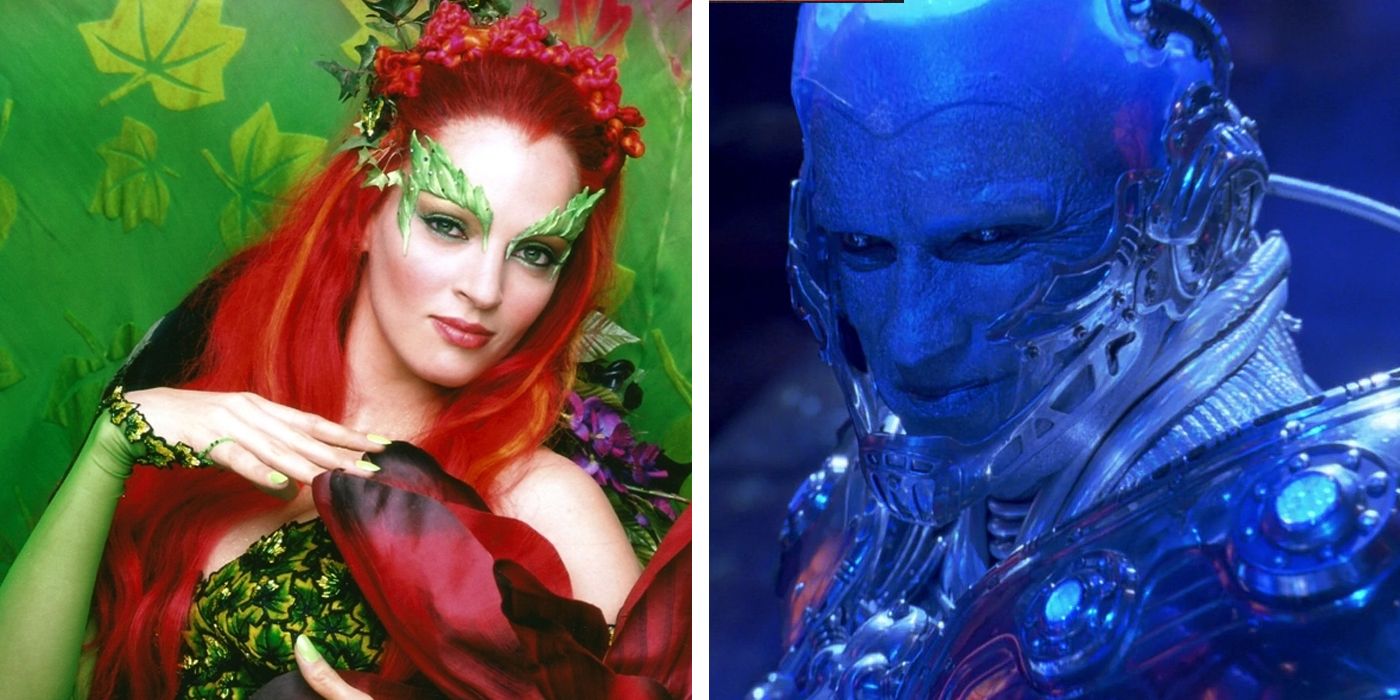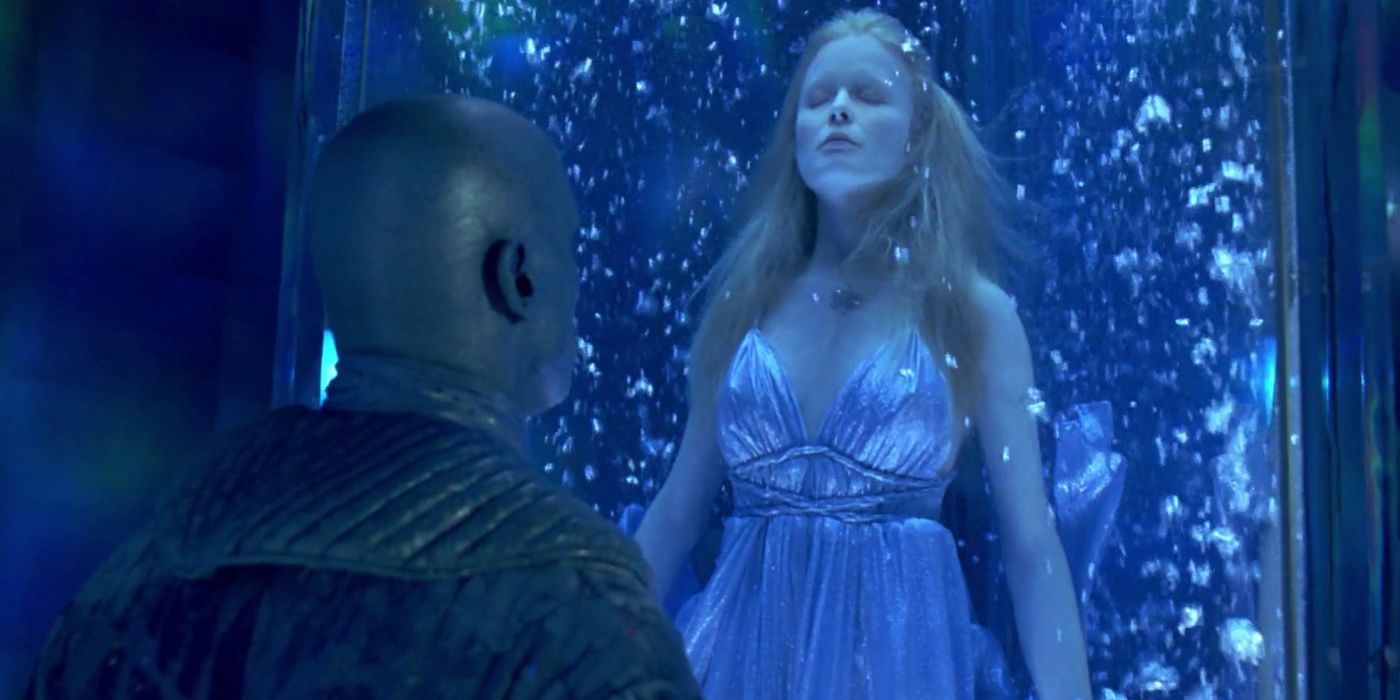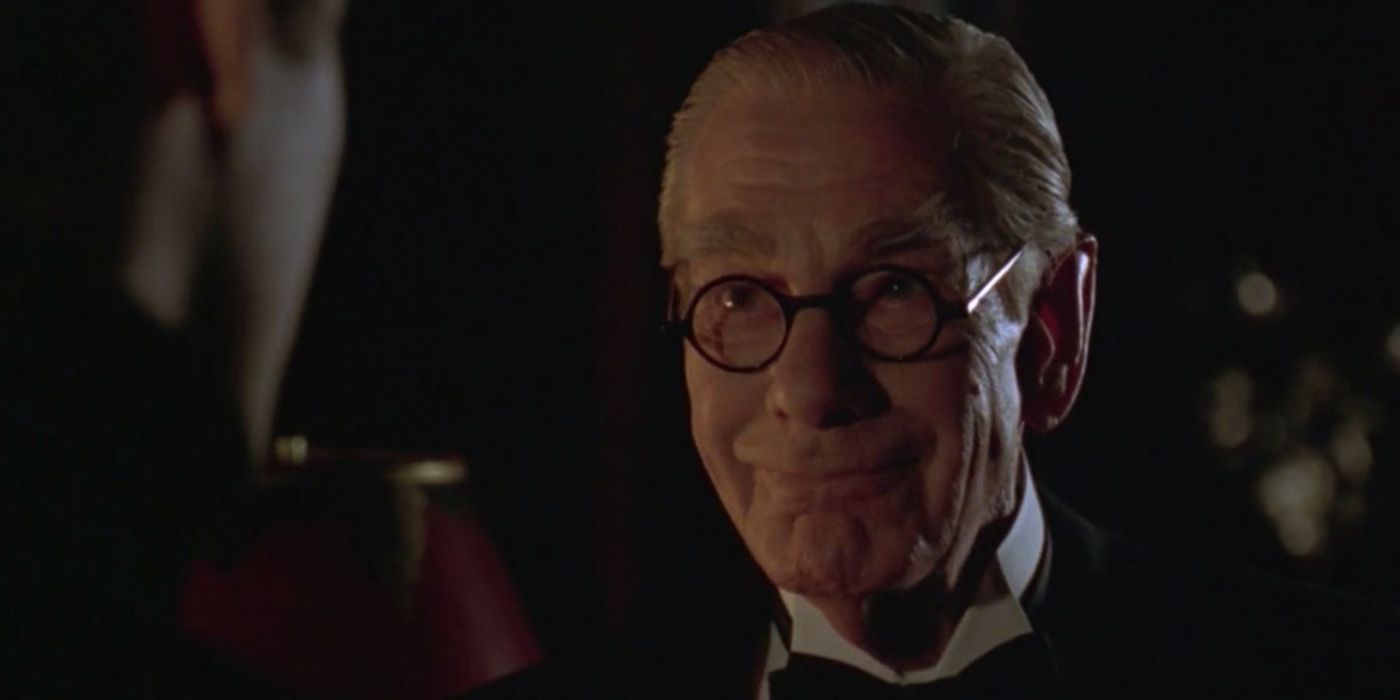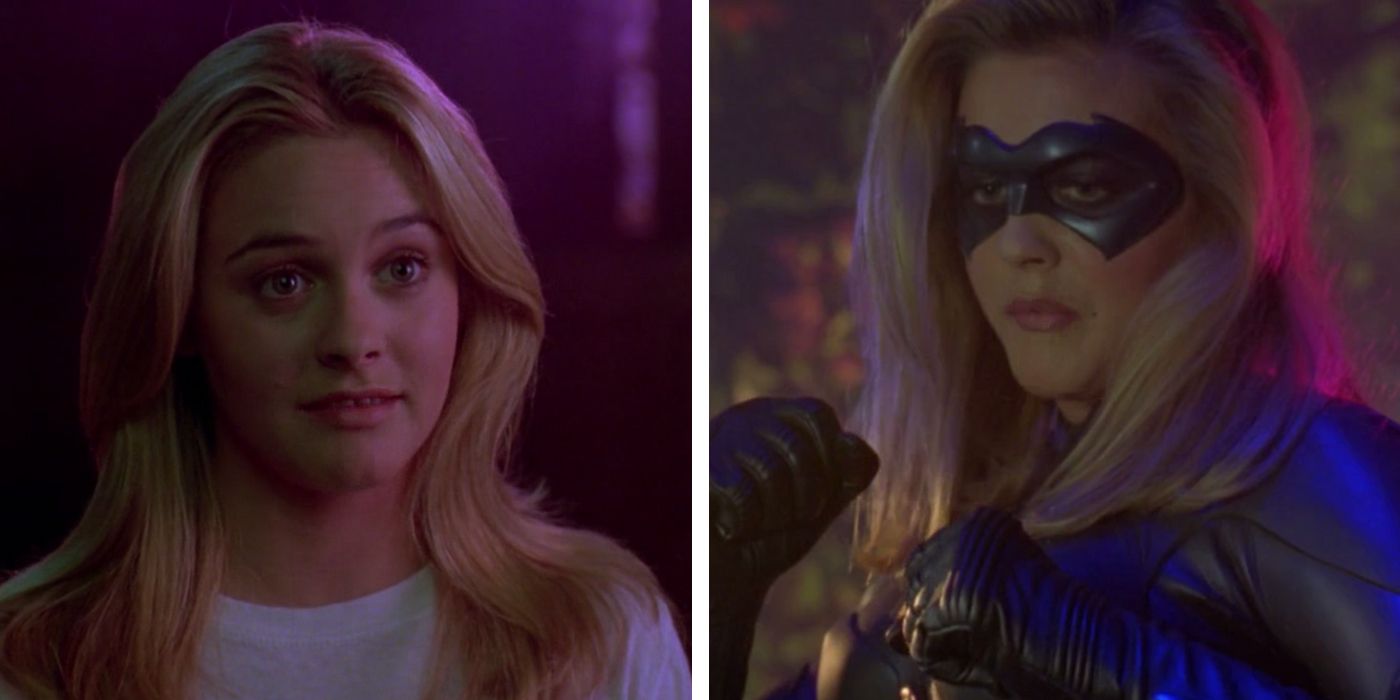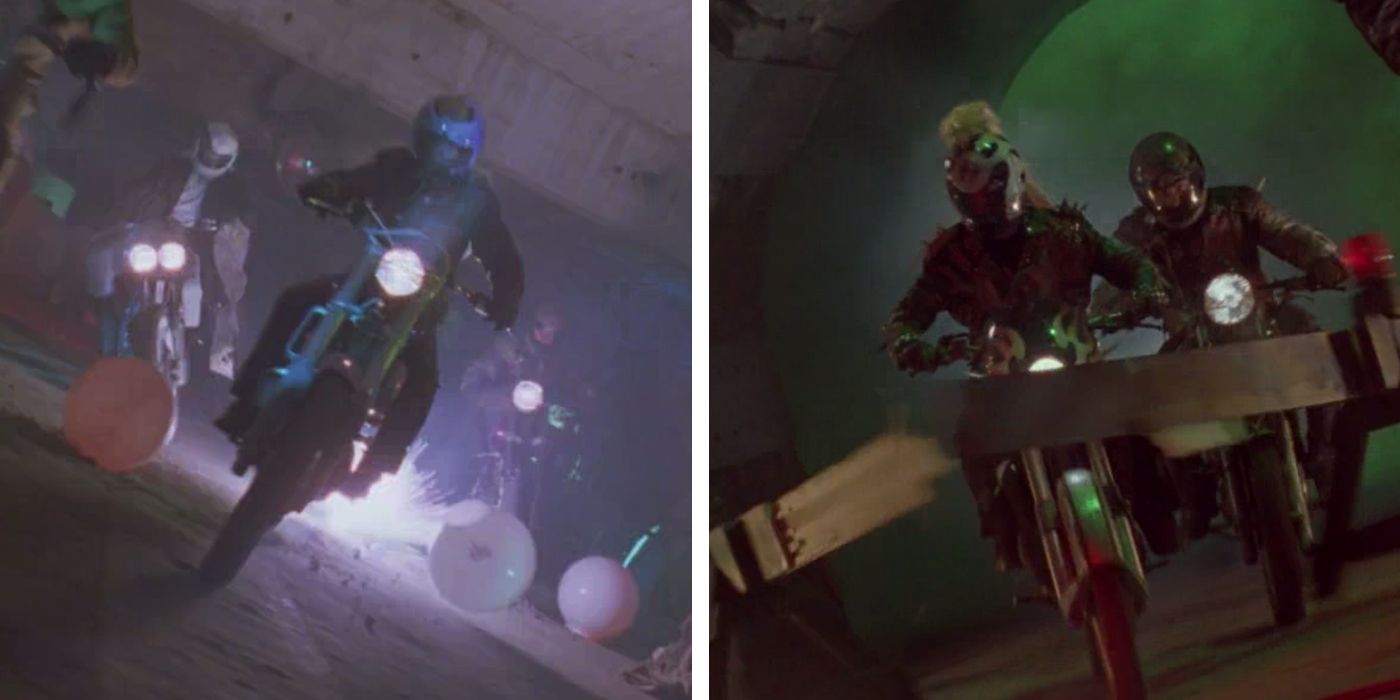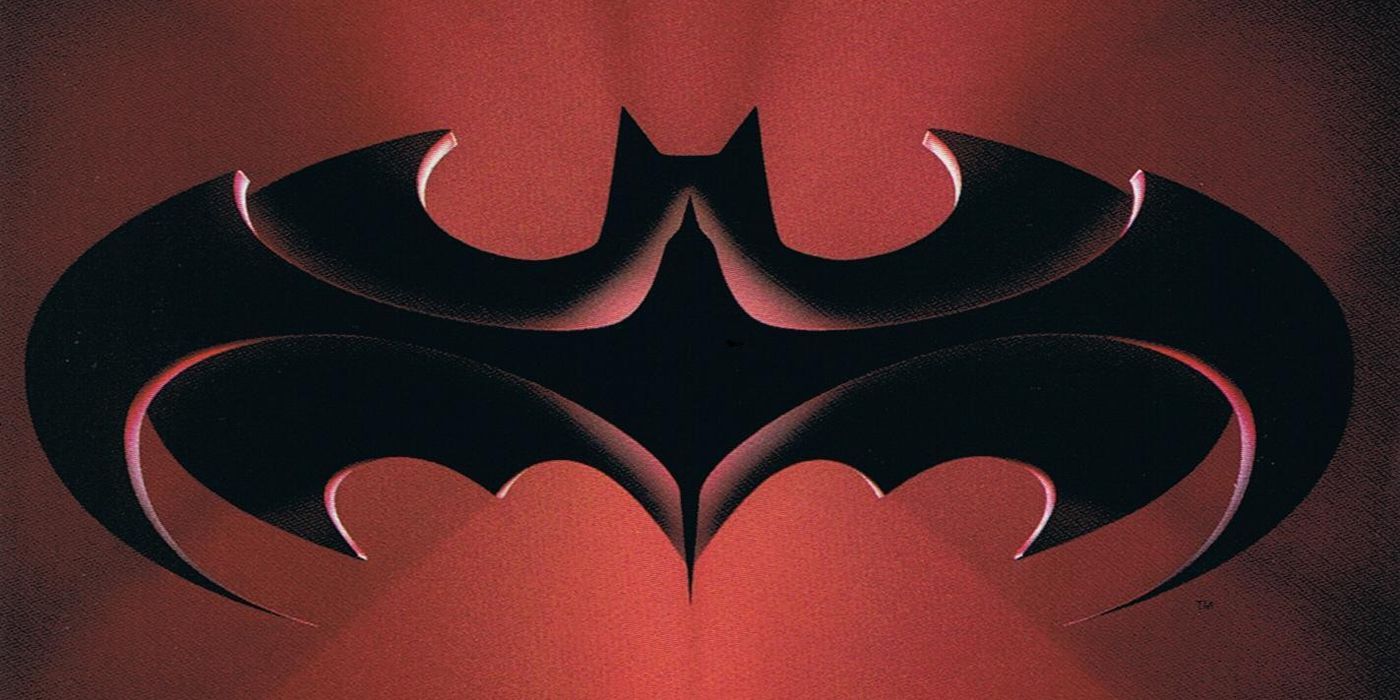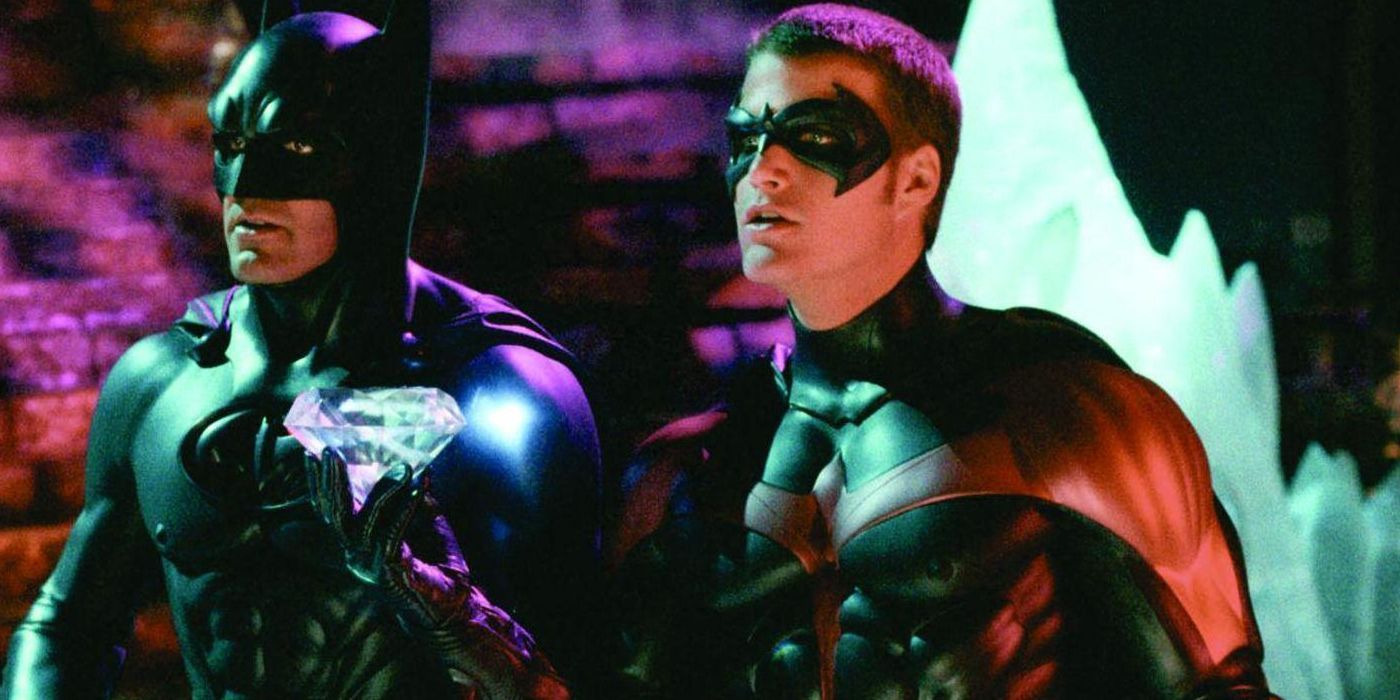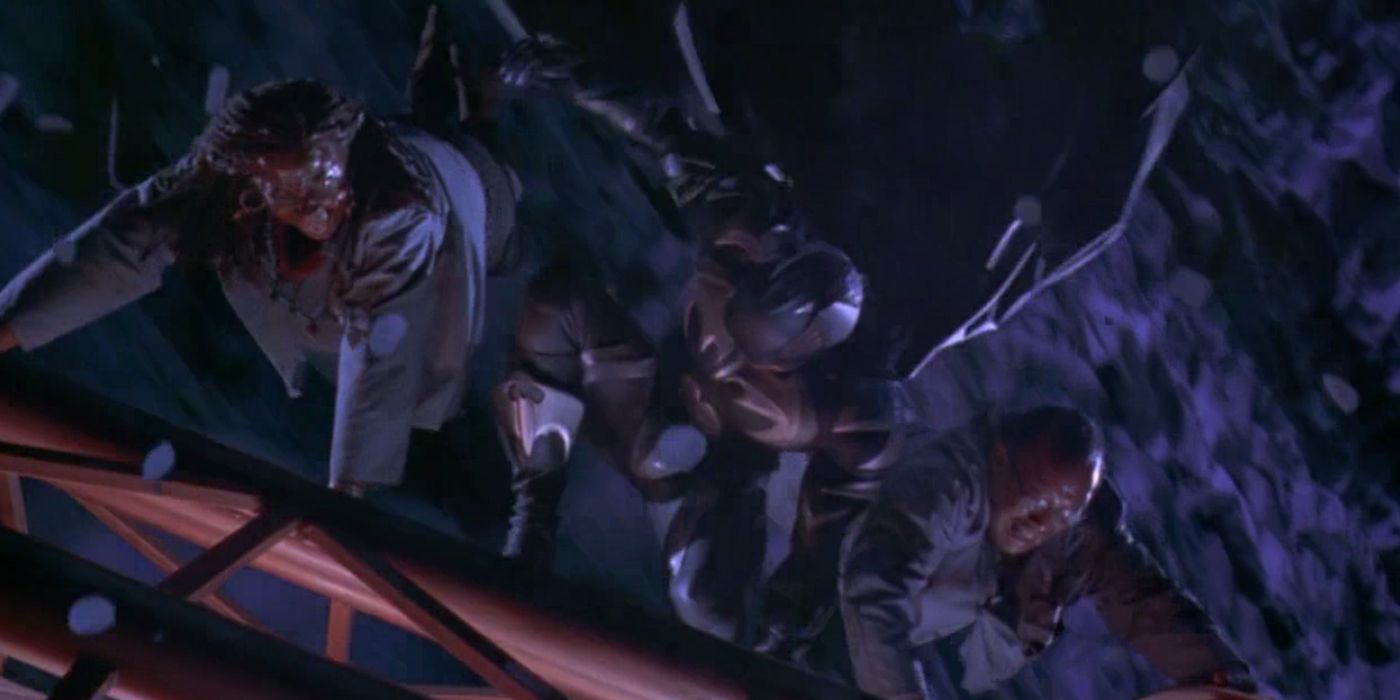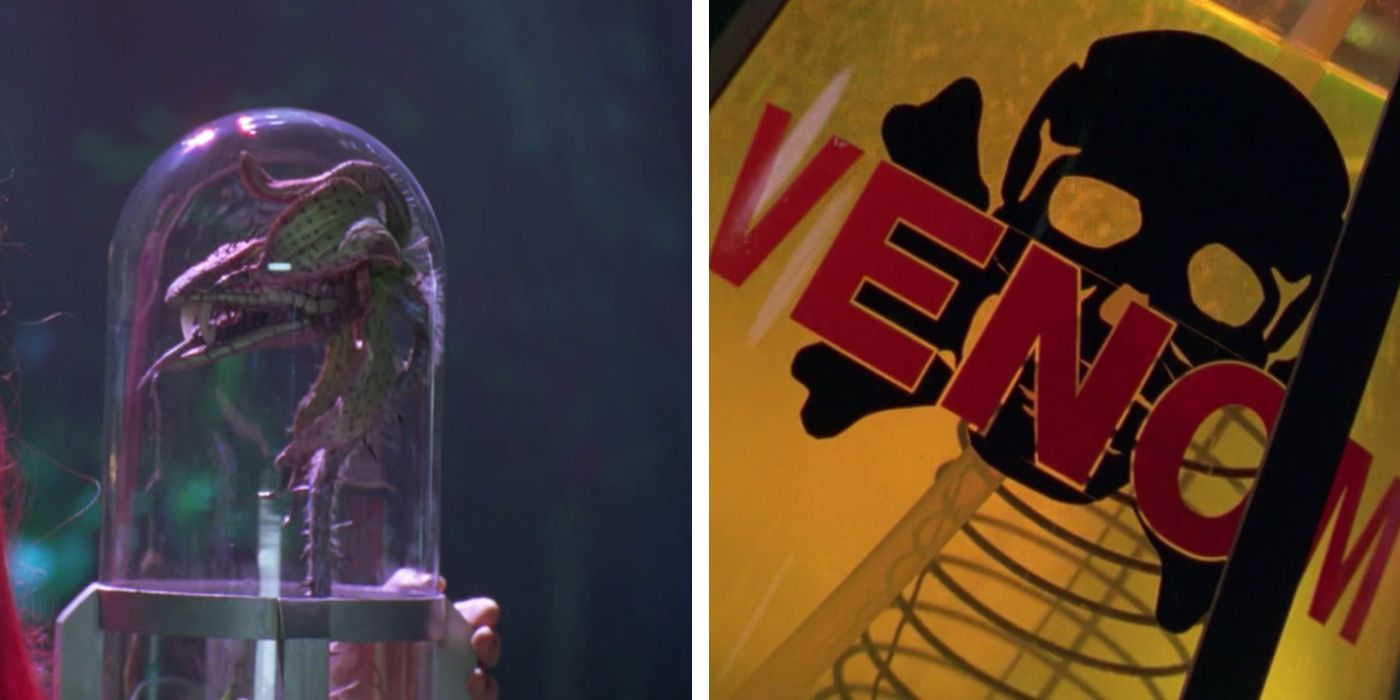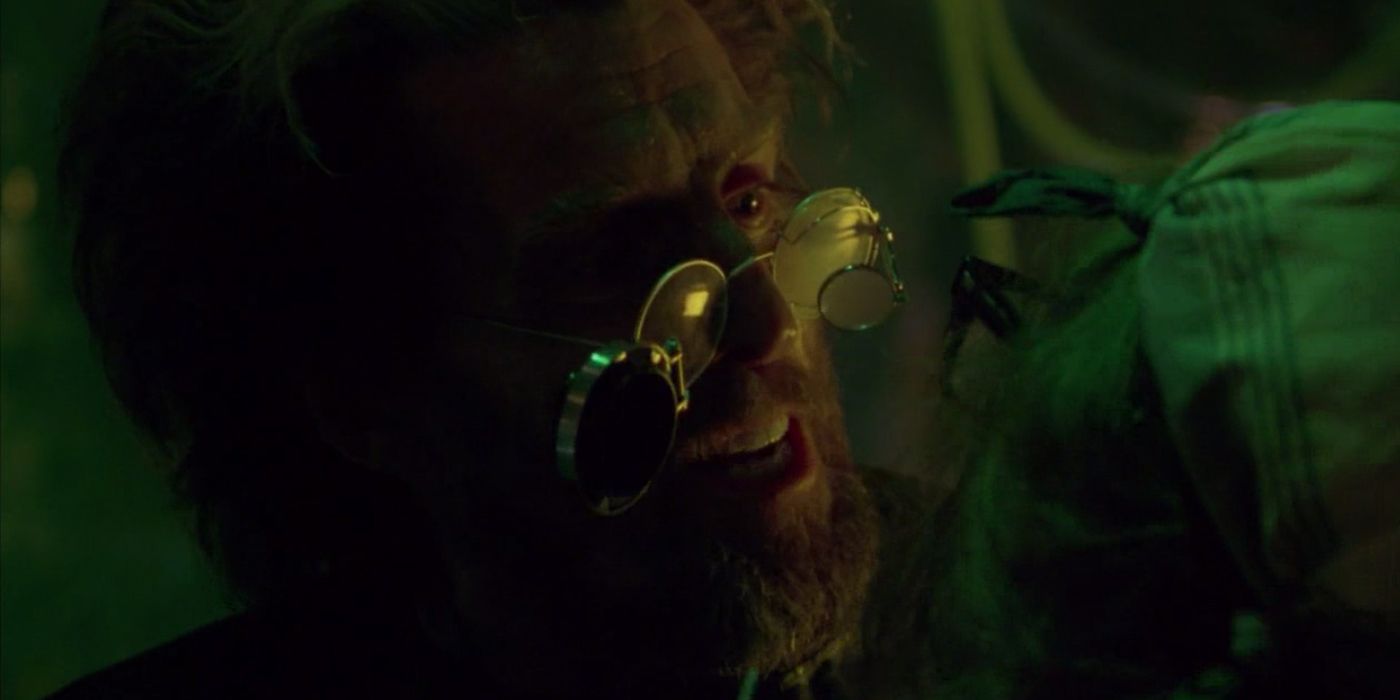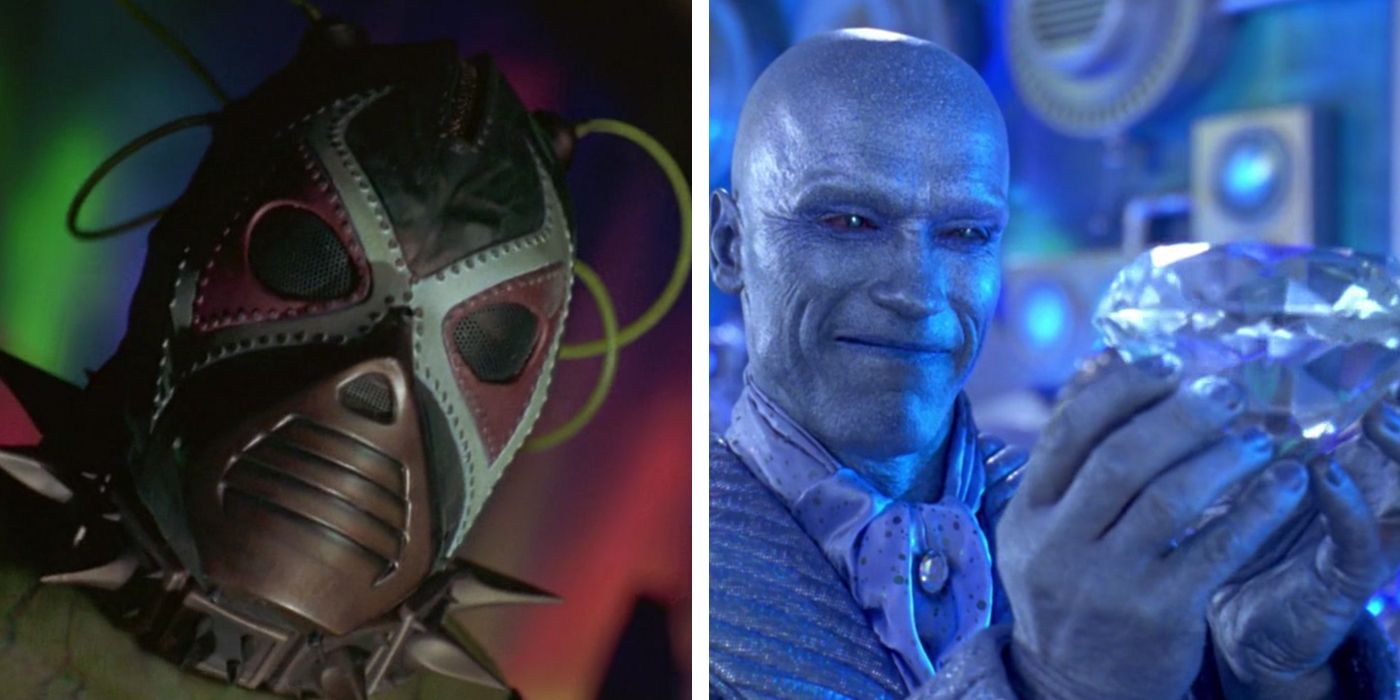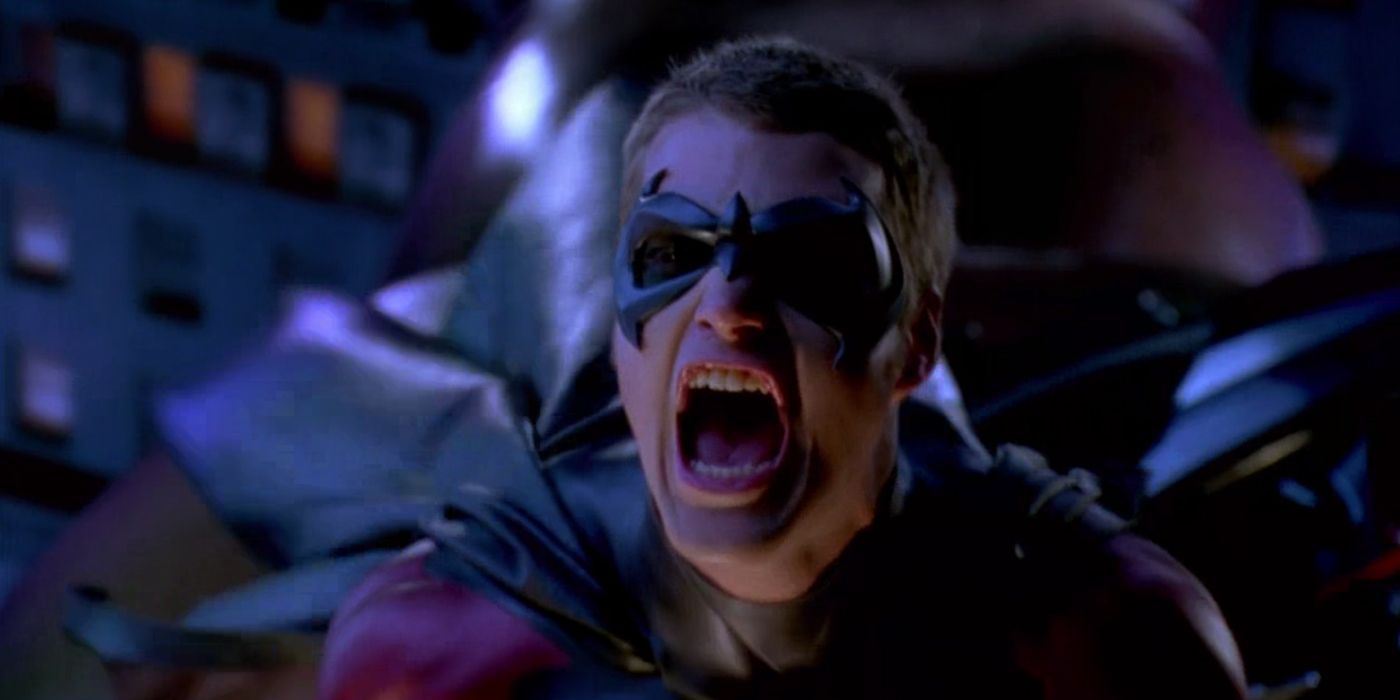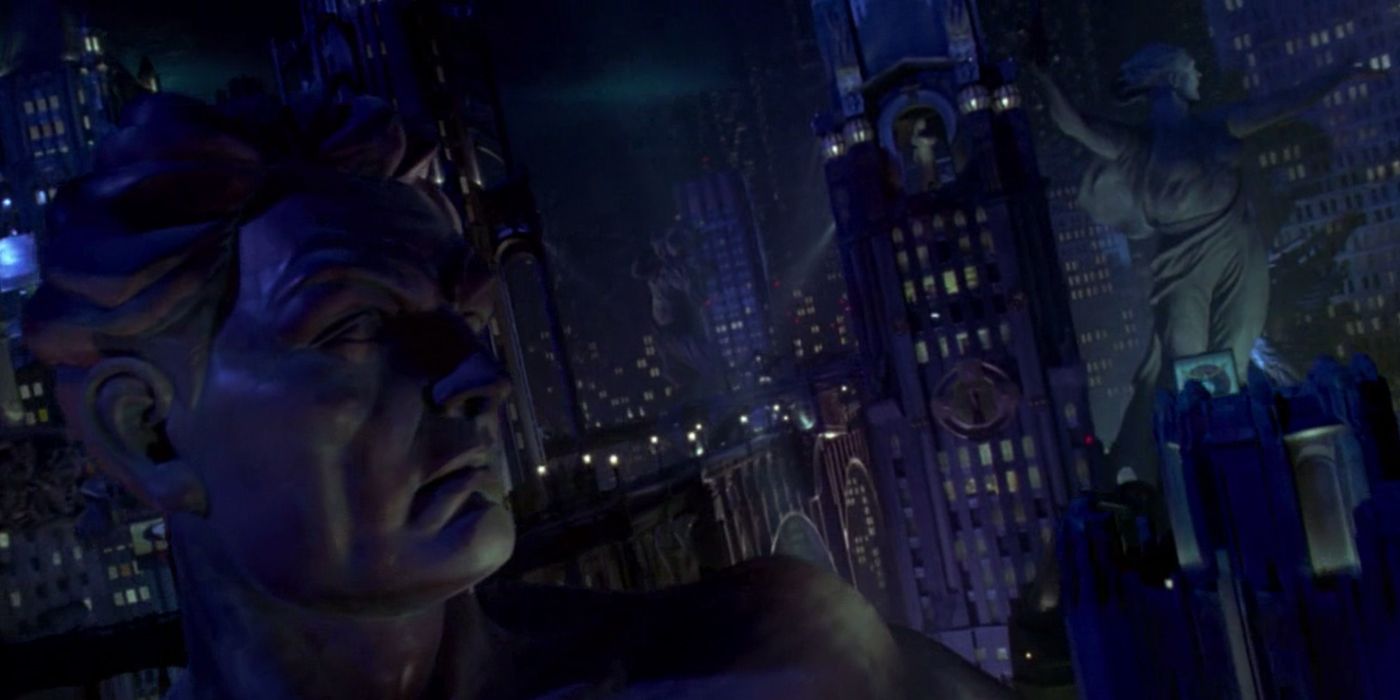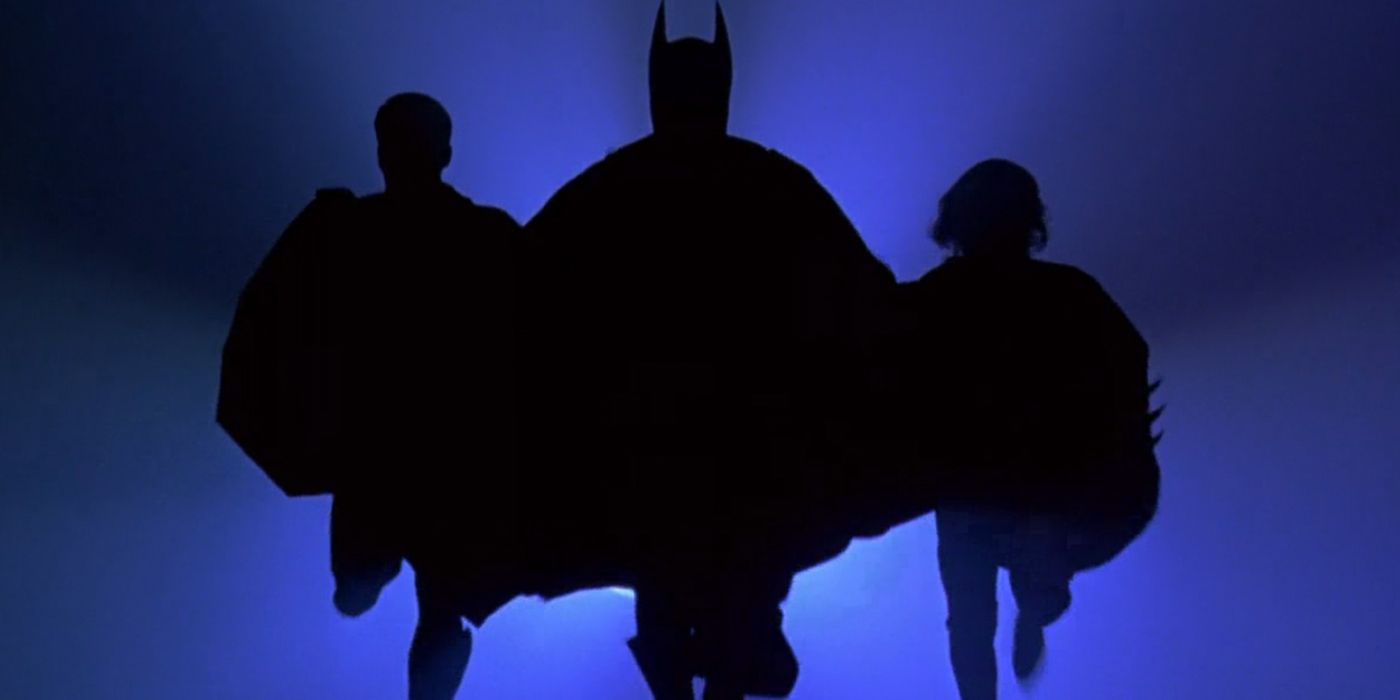By any reasonable standard, “Batman & Robin” is not a good movie. Joel Schumacher’s film suffers from a multitude of bizarre choices that pull it in a thousand different directions at once. In 1997, both critics and comic fans savaged the film for being a feature length toy commercial defined by campy performances and an incoherent tone. After two decades of continued mockery, the movie’s reputation has rotted even more, and the film is widely considered one of the worst movies ever made.
RELATED: Digital Justice: 15 DC Comics Video Games You Forgot Existed
With “The Lego Batman Movie” weeks away from release at the time of writing this, it’s a perfect time to revisit the older toy-friendly Batman movie. Now, CBR is taking a look back at 15 reasons why “Batman & Robin” isn’t the worst movie ever. Although the film remains deeply flawed, it’s a fascinating production that reveals some truly redeeming qualities upon closer reexamination.
15 THE SPIRIT OF "BATMAN ‘66"
In the 1990s, Batman occupied a different place in pop culture than he does today. In the wake of the 1960s’ “Batman” show, the character had been primarily considered a children’s character for decades. By the 1990s, Batman had just started to step out of that show’s shadow thanks to the works of creators like Frank Miller, Paul Dini and Tim Burton. Instead of shunning it, “Batman & Robin” whole-heartedly embraced the legacy of the Adam West era and tried to update it for modern audiences.
While that move backfired spectacularly, lighter takes on the Batman franchise have become more accepted since 1997. In recent years, DC Comics has reclaimed the legacy of the 1960s’ “Batman” with comics like “Batman ‘66” and the animated film “Batman: Return of the Caped Crusaders.” Like “Batman & Robin,” these newer projects are filled with tilted Dutch angles and corny jokes. Although darkness still largely defines the modern Batman franchise, “Batman & Robin” reclaimed a perfectly valid version of the characters years before anything else did.
14 UMA AND ARNOLD
One of “Batman’s” most notable features was its cast of over-the-top Technicolor villains. “Batman & Robin’s” main antagonists are perfectly logical extensions of that era’s campy foes. Uma Thurman’s Poison Ivy channels Mae West, Julie Newmar and Cruella de Vil in a performance that relishes every bad gardening pun. Since Ivy was created by Robert Kanigher and Sheldon Moldoff in 1966's "Batman" #181, that era’s aesthetics are a foundational part of her character. Although Ivy never appeared in the old show, Thurman’s Ivy would’ve been right at home facing down Adam West and Burt Ward’s Dynamic Duo.
Arnold Schwarzenegger’s turn as Mr. Freeze is one of the film’s most reviled aspects, but it’s a faithful update of the Mr. Freeze of the 1960s. In his three appearances on “Batman,” Mr. Freeze was portrayed as a heavily-accented, pun-loving villain by George Saunders, Otto Preminger and Eli Wallach. Schwarzenegger’s Freeze has the exact same traits with his TV predecessors. Even as Mr. Freeze tries to freeze Gotham City, Arnold’s good-natured, jokey performance keeps the character from ever becoming truly evil, which enables his redemption by the movie’s end.
13 HEART OF ICE
While “Batman & Robin’s” Mr. Freeze is largely an extension of his 1960s persona, the film recognizes that “Batman: The Animated Series” added a deeper dimension to the character. In the Emmy Award-winning episode “Heart of Ice,” Paul Dini and Bruce Timm gave Mr. Freeze a tragic origin involving his attempts to cure his terminally ill wife Nora Fries. That’s a compelling motivation for any interpretation of Mr. Freeze, even Schwarzenegger’s neon-blue decathlete.
Schumacher and scriptwriter Akiva Goldsman wisely incorporate Victor Fries’ attempts to cure Nora into “Batman & Robin.” While it doesn’t totally work here, the movie replicates a moving “Heart of Ice” sequence where an imprisoned Mr. Freeze stares longingly at a snow globe that reminds him of Nora. By injecting this pathos into Freeze, the filmmakers make him a sympathetic figure who realistically seems like he would help cure a terminally ill Alfred from the same disease that took his wife.
12 ALFRED’S STORY
After appearing in two Tim Burton directed Batman movies and Joel Schumacher’s “Batman Forever,” Michael Gough’s Alfred is tasked with carrying a lot of “Batman & Robin’s” emotional heft. While Gough had a fairly distinguished career as an actor, his Alfred was largely a supporting character in his first three Bat-film appearances. In this film, Alfred’s sudden terminal diagnosis becomes the driving force behind Batman’s emotional journey towards accepting his place among his adopted family.
While this subplot doesn’t have the space to cohere into something really substantial, Gough elevates the script with the warmth and tenderness that his Alfred shows Bruce Wayne. Although Christopher Nolan’s "Dark Knight" trilogy doesn’t share much with “Batman & Robin,” this film sets a precedent for foregrounding the Bruce/Alfred relationship. While those later films would explore their dynamic to great effect, this film uses that same familial warmth to fast-track Alicia Silverstone’s Barbara Wilson, Alfred's niece, into the Bat-family.
11 BATGIRL’S PRESENCE
Despite its faults, “Batman & Robin” contains the only live-action feature film appearance of Batgirl. Although Yvonne Craig’s Batgirl joined Adam West and Burt Ward’s Dynamic Duo after their big screen adventure, the character’s inclusion here is another nod to the 1960s “Batman” series. In the '60s series and that era’s comics, Batgirl is secretly Barbara Gordon, the daughter of Commissioner Gordon. Since the elder Gordon hardly has a presence in this movie, Batgirl’s familial relationship to Alfred makes more sense in the context of the film.
Although she doesn’t share a last name with Barbara Gordon, Silverstone’s Barbara Wilson shares her aptitudes for computers and motorcycles. While she doesn’t get much screen time in-costume, the film treats Batgirl as an equal to Batman and Robin and gives her a pivotal role in the film’s climax. While Batgirl seems like a fairly likely candidate to show up in the upcoming “Gotham City Sirens,” “Batman & Robin” remains one of Batgirl’s most visible appearances outside of comics right now.
10 GOTHAM CITY RACER
In one of the film’s better action sequences, Silverstone’s Barbara and Chris O’Donnell’s Dick Grayson race each other through the streets of Gotham City in an underground motorcycle race. Within the context of the film, the event gives Barbara and Dick a chance to establish a kinship over their shared love of thrill-seeking.
In the race sequence, the film’s various tones coalesce into a stylistic delight. The crowded scenes that set-up the race feature several explicit references to films like “Mad Max” and “A Clockwork Orange,” and even an inexplicable cameo from the rapper Coolio. In a strange but inspired choice, the race plays out like a real-life level of “Mario Kart,” complete with balloons and explosions littering the track. Set against the pulse-pounding beat of Underworld’s minor techno classic “Moaner,” this sequence is legitimately thrilling. While the rest of the film struggles to find the right balance between campy comedy and serious action, this scene finds the perfect tonal blend.
9 BATMAN & ROBIN: THE ALBUM
While “Batman & Robin” was only a moderate commercial success, the album featuring “music from and inspired by” the movie was a smash hit, filled with an eclectic mix of artists. In 1997, the album produced several chart-making singles across genres. The album’s lead single was the Smashing Pumpkins’ “The End is the Beginning of the End,” a frantic mix of distorted guitars and electronica that won a Grammy in 1998. The compilation also featured R. Kelly’s “Gotham City,” a bizarre ballad that ends with a children’s choir praising Batman’s hometown as an inspirational “city of peace.” In addition to Underworld, the album produced memorable singles from rappers Bone-Thugs-N-Harmony, singer-songwriter Jewel and pop-rockers the Goo Goo Dolls.
Although Elliot Goldenthal’s score never reaches the heights of Danny Elfman’s seminal scores for Tim Burton’s Batman films, insertions of his bombastic theme are subtly woven throughout the film. While this might seem like a minor note, it adds a sliver of cohesion to the film’s tonal inconsistencies.
8 ROBIN’S ARC
The film’s puzzling plot seems to pull most of its characters in wildly divergent directions amidst changing motivations and shifting alliances. While he’s underserved in this overcrowded feature, Robin’s character arc has a clear trajectory that’s true to his comic roots. After being introduced in “Batman Forever,” O’Donnell’s older Robin expresses the same exasperation with being Batman’s sidekick that fueled Dick Grayson’s evolution into Nightwing in the comics.
While Schumacher’s Robin is called Dick Grayson, his quick temper, endless frustration and recklessness seem to be borrowed from the comics’ second Robin, Jason Todd. “Batman & Robin” is only this Robin’s second adventure, and recasting Grayson’s desire to move beyond the Robin identity as an extension of his Todd-esque immaturity works. Since Robin’s emotional arc encourages him to outgrow those emotions, it conveniently paves the way for a return to the status quo at the film’s conclusion. Instead of flying solo, this Robin reaffirms his status as a more equal partner to Batman and Batgirl.
7 BATMAN IS BATMAN
When this film was released, George Clooney’s turn as Batman was criticized for making the character supremely arrogant and intensely unlikable. Even though decades of stories have conditioned readers and fans to think otherwise, that’s not an invalid interpretation of the character. In the franchise’s most beloved iterations, Batman remains a regular source of frustration to his closest allies. Since most stories cast Batman as a protagonist, these unlikable failings can be easily glazed over in favor of showing Batman doing something cool.
As 2014’s “The Lego Movie” proved, an unlikable Batman can still star in a compelling story. Given Batman’s fundamentally altruistic mission, the interpersonal flaws enrich the character. While Clooney’s Batman seems uncaring, he spends a great deal of time rescuing civilians and thawing out frozen civilians. While some more recent superhero films have featured wanton destruction and loss of life, Batman repeatedly goes out of his way to save Gotham and protect its citizens from danger. Regardless of any other factors, that concern for the well-being of others cements the validity of Clooney’s Batman.
6 IVY’S POISONS
Despite Thurman’s delightfully exaggerated performance, Poison Ivy never really comes into her own as a multi-faceted character. Although she plays an increasingly less important role as the plot progresses, the script finds some clever ways to tie her into some of its more outlandish aspects. Before she’s doused with plant chemicals and becomes Ivy, Dr. Pamela Isley is seen doing research cross-breeding animal and plant DNA. While the full extent of this Ivy’s control over plant life is nebulous, these experiments explain how she can facilitate the growth of sentient monster plants so quickly.
Brilliantly, “Batman & Robin” also gives Ivy a role in the creation of Bane. As part of her experimental research, Ivy inadvertently creates the Venom serum. While Bane is reduced from a criminal mastermind to a gurgling plant monster, he is given super-strength from Venom just like his comic counterpart. Even if Bane is used as Ivy’s glorified henchman, the revelation of her involvement in his creation ties the characters together well.
5 JOHN GLOVER’S JASON WOODRUE
A few years before John Glover started his lengthy tenure as Lionel Luthor on “Smallville,” he played a small but essential role as Jason Woodrue in “Batman & Robin.” In comics, Woodrue, also known as the Floronic Man, has had a fascinating trajectory from a minor plant-based DC villain to a mystical “Swamp Thing” antagonist. While Woodrue is only a human here, he plays the mad scientist who’s in charge of Pamela Isley’s research lab and is responsible for her evolution into Poison Ivy and the creation of Bane.
In a sequence that would be right at home in the “Batman” TV show, Woodrue tries to sell the Venom serum to a group of dictators called the “Un-United Nations.” As the character, Glover seems to channel every B-movie mad scientist cliché there is with extreme gusto. Glover hones in on the maniacal glee at this movie’s core and embodies it perfectly during his brief time on screen.
4 BATMAN LORE
Even though this overstuffed movie barely has enough room for all of its characters, the film is still filled with a number of allusions to Batman lore. Although “Batman & Robin’s” Bane only has surface connections to the Bane of comics, the character’s inclusion here is still noteworthy. When the movie was released, the character had only been around for four years after his 1993 comic debut. Along with the inclusion of a Nightwing-inspired Robin costume and the “Heart of Ice” references, the film showed a remarkable willingness to engage with that era’s Batman mythology.
The film also includes several nods to older, more obscure Batman lore. Wilfred Pennyworth, Alfred’s rarely seen older brother, earns a mention in the film. When Batman’s recounting Mr. Freeze’s origin through the Bat-Computer, there’s a subtle reference to the villain’s original moniker Mr. Zero. The producers of the 1960s’ “Batman” series changed the character's name to Mr. Freeze for an episode that involved a diamond robbery. The movie references that specific episode by making diamonds the source behind Freeze’s power suit, ice gun and giant freeze ray.
3 FLASHES OF BRILLIANCE
Despite the tonal confusion that plagues so much of the film, Schumacher and the production team manage to capture a few striking moments of brilliance from the midst of the film’s madness. In one blink-and-miss-it scene, an extreme close up on Poison Ivy’s toxin-filled lips highlights their neon hue and reframes them in the same way a documentary might showcase a poisonous tropical plant.
While some of “Batman & Robin’s” action scenes are very silly, most of the chase sequences work pretty well. In the middle of a chase with Mr. Freeze’s gang, Batman cuts power to the Redbird, Robin’s motorcycle. As Batman continues pursuit, Robin is left to cry out in agony on the fingertip of a skyscraper-sized statue. O’Donnell lets out a scream that releases years of unseen frustration in one of the movie’s best pieces of acting. Having already seen Robin’s exhilaration during the motorcycle street race, the audience is left to linger on Batman’s cruel indifference to his partner’s wants as the chase continues.
2 GOTHAM CITY
The Gotham City of Tim Burton’s Batman movies was a dense gothic urban environment, shrouded in perpetual dusk. In “Batman & Robin,” Schumacher’s Gotham, brought to life by production designer Barbara Ling, is filled with neon lights and garish color that seems to expand infinitely upwards. With dense pockets of buildings and elevated roads, the city seems to be built around giant figures that look like giant Renaissance era statues come to life and then trapped in steel.
While these design choices are deeply impractical, they bring a hint of operatic grandness to the fundamentally silly proceedings. The cavernous Batcave seems to reduce everything but the Batmobile into miniature size and the Gotham Observatory sits in the palms of a giant statue that towers over the city’s skyscrapers. Schumaker’s Arkham Asylum twists like a whimsical dungeon pulled from a hallucinogenic-fueled nightmare. Where most modern depictions of Gotham have some basis in reality, “Batman & Robin’s” Gotham boldly highlights the inherent unreality of a world with superheroes.
1 IT HAD TO HAPPEN
Despite its multitude of flaws, “Batman & Robin” was a necessary growing pain in the development of the superhero movie as a viable genre. The failure of this fascinating experiment killed the idea of campy superheroes on film and made it clear that the next wave superhero movies couldn’t just be live-action Saturday morning cartoons.
In the decades following “Batman & Robin,” filmmakers learned from its mistakes and, from its ashes, created the modern superhero film as we know it. These revelations led to a greater emphasis on the sci-fi elements of the X-Men franchise in the early 2000s. As the general public grew more accepting of superheroes, Sam Raimi’s Spider-Man trilogy and the early Marvel Studios movies found a streamlined story-driven approach to embrace full-fledged superheroics. The failure of a supposedly kid-friendly Batman paved the way for Christopher Nolan’s adult-skewing “Dark Knight” trilogy in the 2000s and Zack Snyder’s even darker take on the character in the 2010s. While “Batman & Robin” remains defined by misguided choices and tonal inconsistency, it’s never dull and hints at the future highs that awaited the resilient Batman franchise.
Stay tuned to CBR for the latest on "The Lego Batman Movie" and the Dark Knight's continuing adventures! Let us know what your favorite Batman movie is in the comments below!

